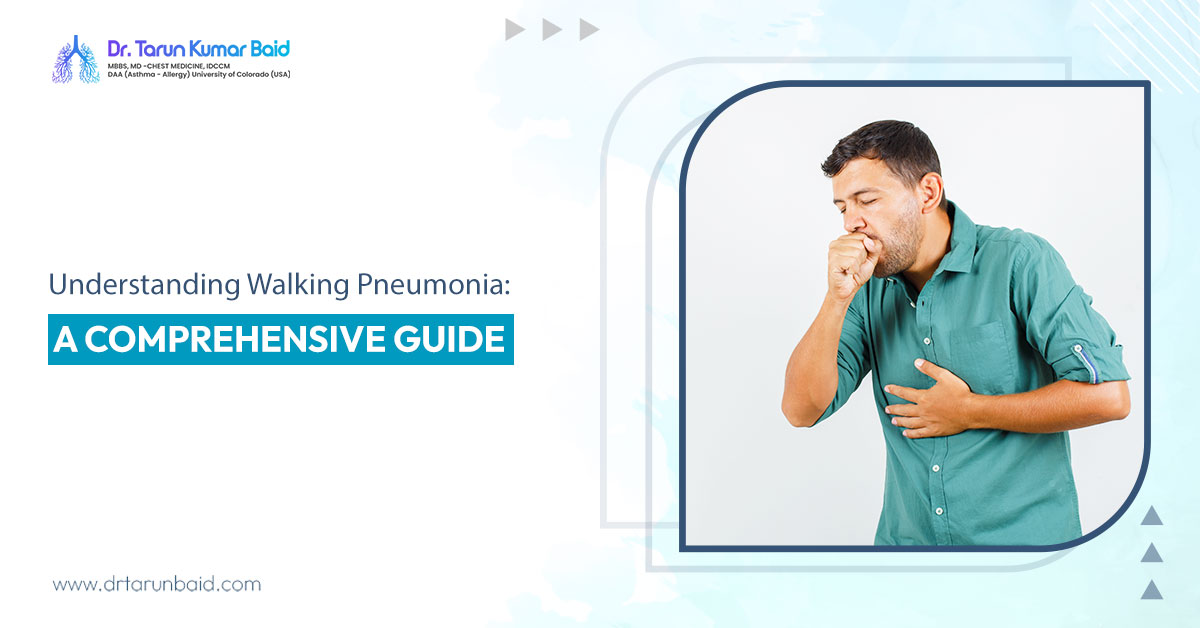Pneumonia is caused by a fungal, bacterial, or viral infection that can lead to fluid build-up and inflammation in the lungs. One of the mildest forms of pneumonia is walking or atypical pneumonia which doesn’t require hospitalization and also doesn’t lead to serious complications. However, to prevent this mild version of pneumonia from taking a severe stage, it is essential to seek professional guidance from the best chest specialist in Siliguri.
Walking pneumonia mainly affects your lower and upper respiratory tract where the symptoms of this disorder can often mimic common cold signs. This makes it highly difficult to detect this disorder and offer early intervention. In most cases, patients recover from this disorder within 3-5 days but the underlying symptoms of it such as cough and sore throat can stay for a couple of weeks or months.
Given below is a detailed guide about walking pneumonia which will help you to understand its common signs and ways to prevent it.
Types
Walking pneumonia can be divided into three subtypes which include Chlamydial pneumonia, Mycoplasma pneumonia, and Legionella pneumonia. Mycoplasma pneumonia is the mildest form of walking pneumonia that can be cured without any treatment. Herein, most young adults and school-age children have a high chances of developing chlamydial pneumonia caused due to a bacterial infection.
The most serious type of walking pneumonia is Legionnaires’ disease which requires urgent diagnosis and treatment. If this condition is left untreated then it can lead to respiratory failure and even death. Walking pneumonia is highly contagious and one can get affected by any of these subtypes by inhaling the airborne water droplets with the bacteria.
Symptoms
The symptoms of walking pneumonia are usually mind and can go unnoticed for a longer period. In most cases, you can experience the symptoms of it within 1-4 weeks of the infection. Some common symptoms of this disorder include-
· Fatigue
· Sore throat
· Weakness
· Laboured breathing
· Recurrent cough
· Loss of appetite
· Headache
· Chest discomfort
· Fever
· Mild chills
Risk Factors
You’re at high risk of suffering from walking pneumonia if you’re below 2 years or above 65 years. Older adults and infants are highly likely to develop this infection due to weak immune systems. People taking immunosuppressant medications can also be affected by this disorder.
You must contact a reputed pulmonologist in Siliguri immediately if you’re at high risk of developing this pneumonia and experiencing common cold symptoms. There are also some underlying health conditions that make you prone towards the disorder which include asthma, COPD, and emphysema.
Diagnosis
To diagnose walking pneumonia, the doctor will first ask you about the developed symptoms and how long you’re experiencing it. The doctor can also conduct an elaborate physical examination to check your general health.
An auscultation will also be performed by your healthcare provider where a stethoscope will be used to listen to the lungs. This will help the doctor check your breathing and heart sounds while looking for any abnormal patterns or sounds.
Treatment
In most cases of walking pneumonia, home remedies and over-the-counter medications can help you to attain complete recovery. The doctor can prescribe you some antibiotics, cough suppressant medications or ibuprofen and acetaminophen to reduce fever. You can also get proper rest and use a humidifier for a quick recovery.
If you’re experiencing breathing difficulties then hospitalization can be required to treat the pneumonia. In the hospital, you may receive antibiotic therapy, respiration therapy, or intravenous fluids to get relief from the distressing symptoms.
It is essential for you to take annual flu shots by contacting the best chest specialist in Siliguri in order to prevent walking pneumonia. You can also cover your mouth and nose, stop smoking, and regularly wash your hands to prevent this infection. You must always remember to take extra precautions towards the disorder during season changes.





Comments